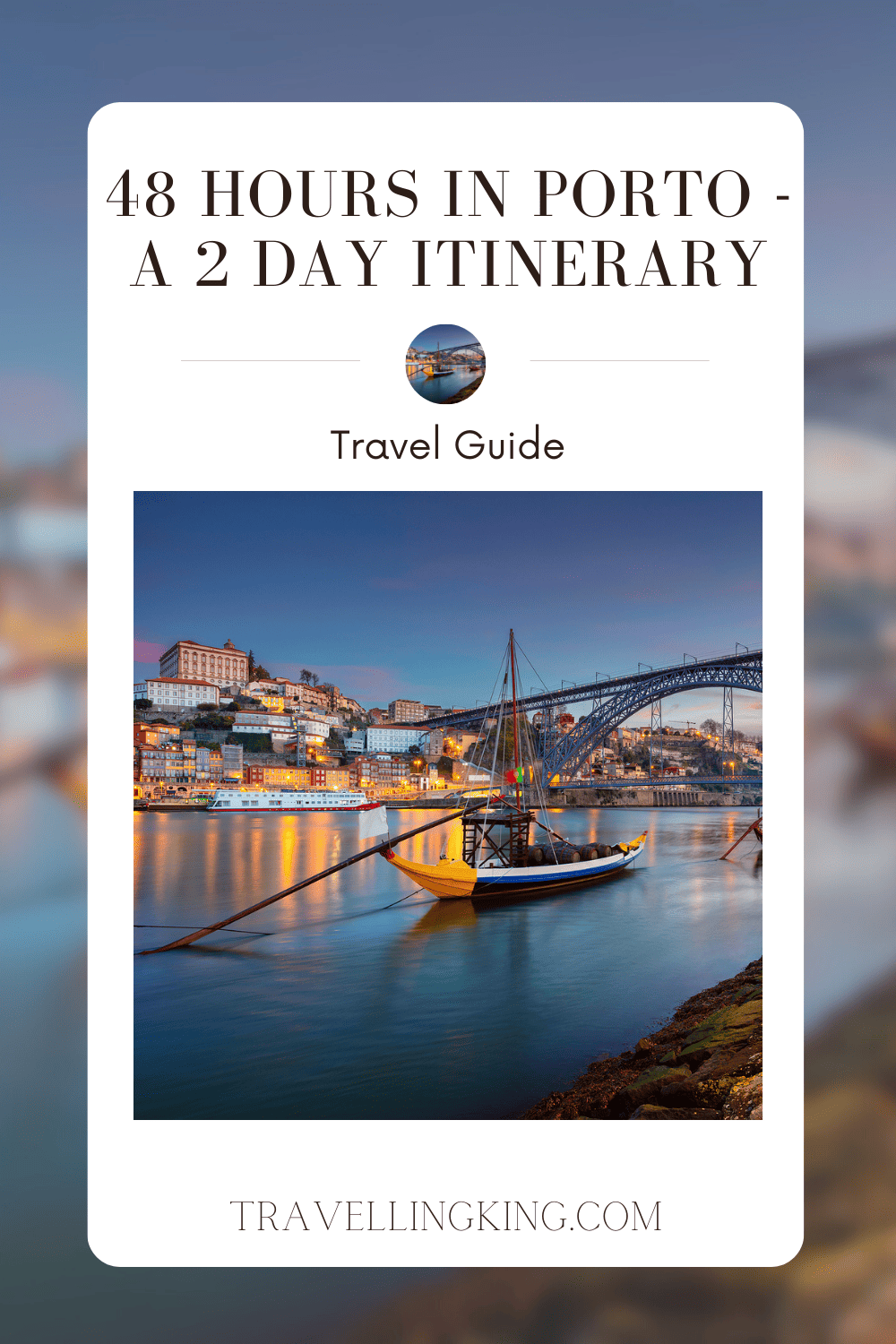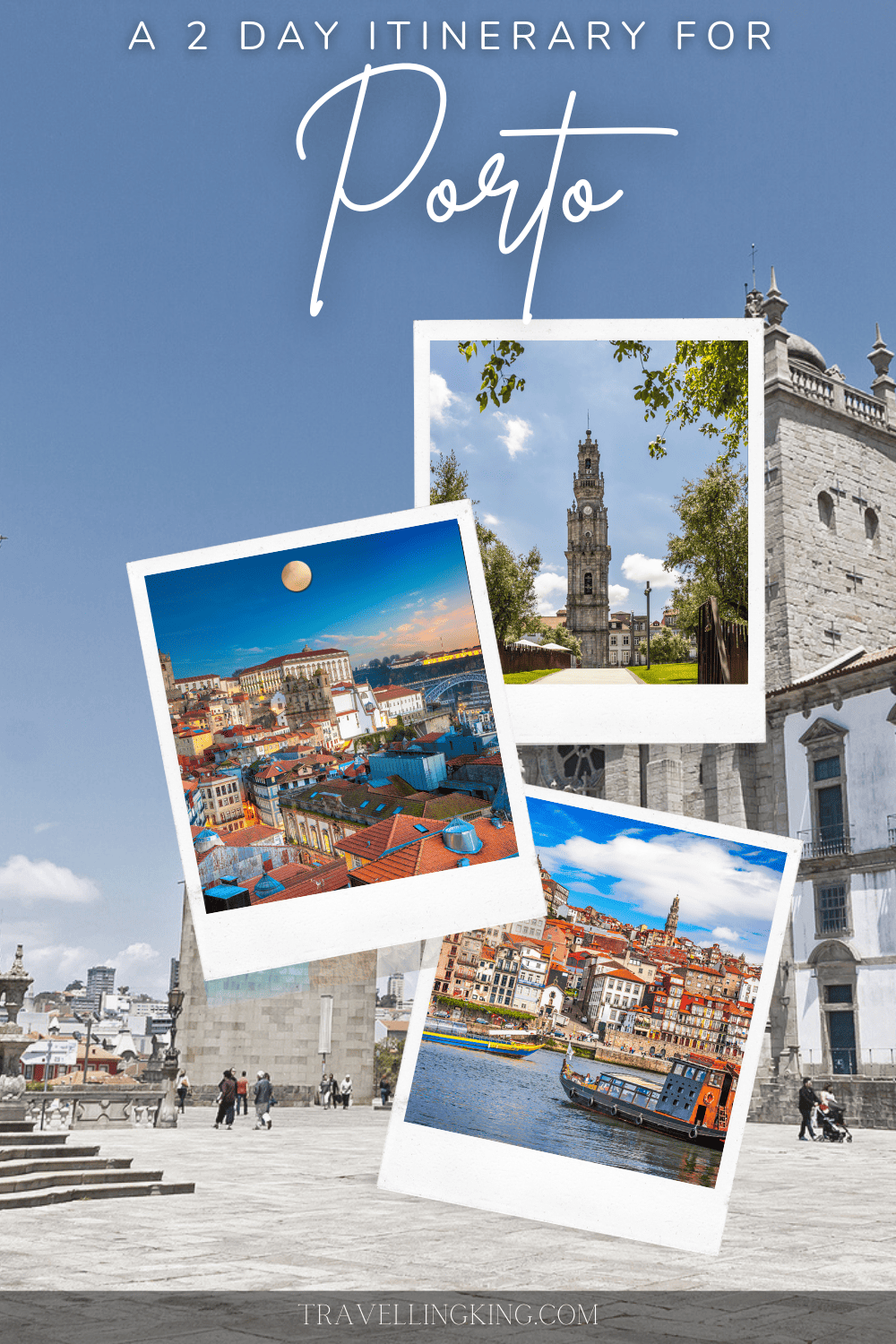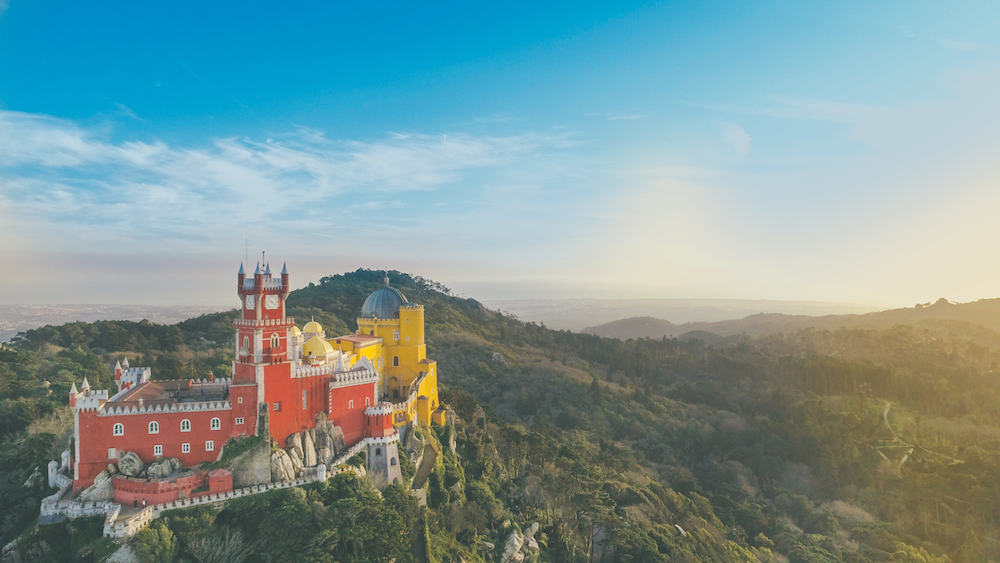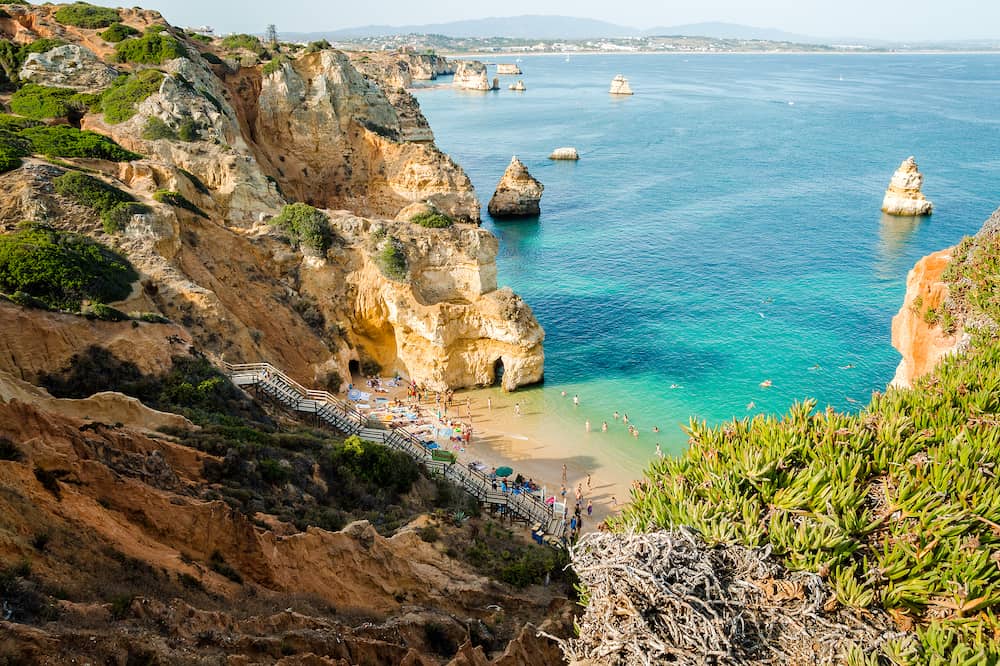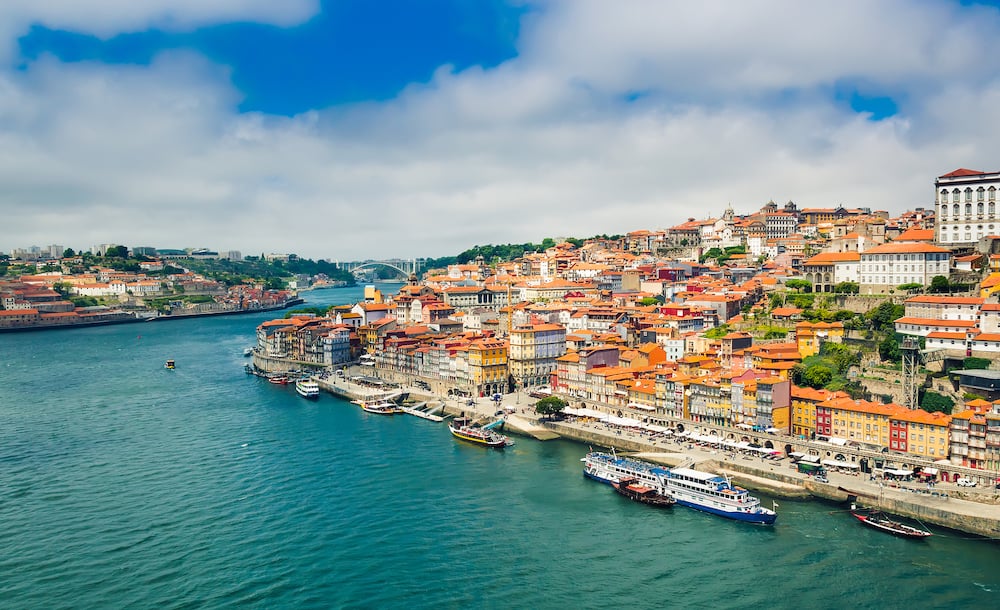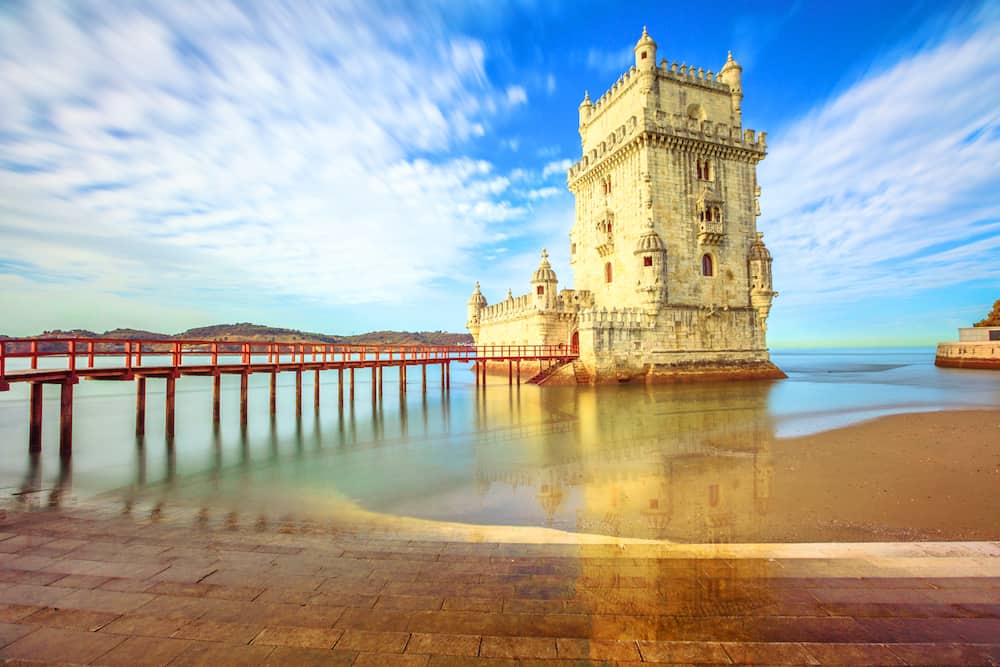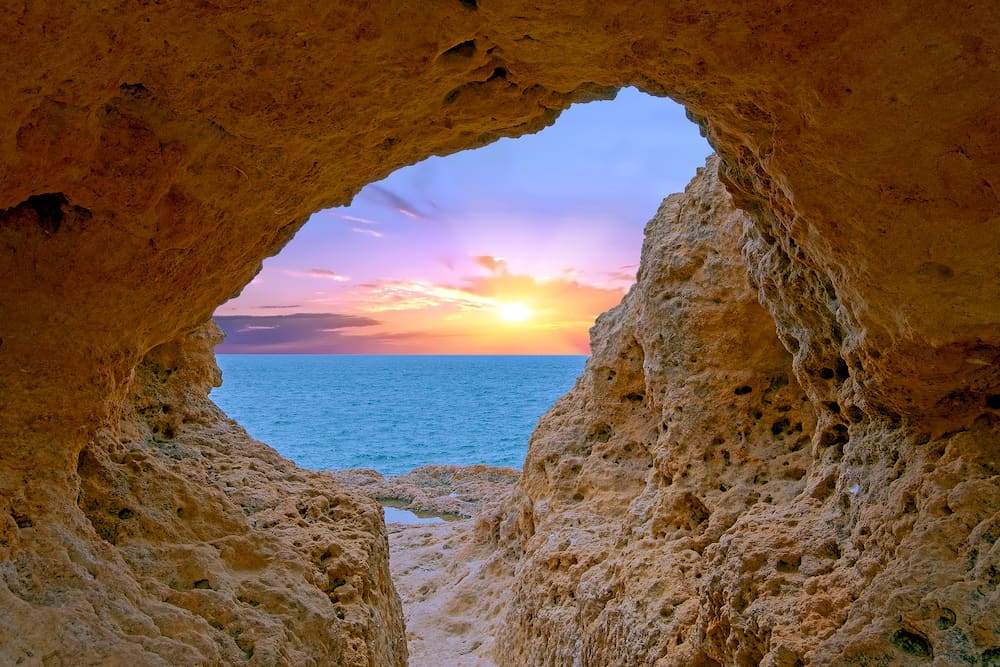48 hours in Porto – A 2 day Itinerary
More than a cultural wonder, an overlooked city, a digital nomad’s paradise and one of the greatest cityscapes to exist… You’re heading to Porto for an epic adventure.
This 2 day itinerary for Porto will cover the frequented paths, lesser known freeways and overgrown walkways to ensure that you emerge from the Portugal tunnel with a new outlook.
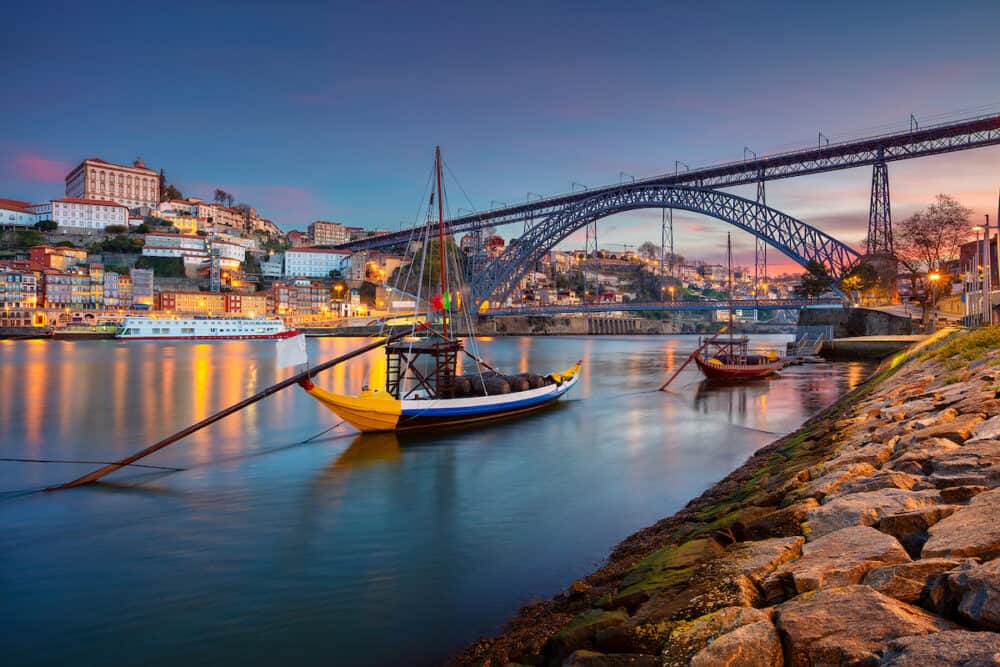
Where to stay in Porto for 2 days
The Ribeira district is one of the most picturesque and historic areas of Porto. It is located along the banks of the Douro River and is known for its colorful buildings, narrow streets, and charming atmosphere.
Staying in Ribeira centers you in Porto’s historic center, with easy access to attractions like the Porto Cathedral and the Dom Luís I Bridge.
The Baixa district is Porto’s downtown area and offers a mix of historic landmarks, shopping streets, and lively squares.
Staying in Baixa will have you visiting major attractions like Avenida dos Aliados, the iconic São Bento Train Station, and the bustling shopping street of Santa Catarina.
For a more relaxed and upscale coastal experience, Foz do Douro will suit your tastes. Located at the mouth of the Douro River, Foz do Douro offers beautiful beaches, seaside promenades, and luxury residences. It’s known for its seafood restaurants.
Boavista is a modern and residential neighborhood that combines residential areas, business districts, and cultural attractions.
It is home to Casa da Música, a striking concert hall, as well as the Serralves Museum and Park, a contemporary art museum set in beautiful gardens. Boavista is a mix perfect for the not-so-fussy traveler.
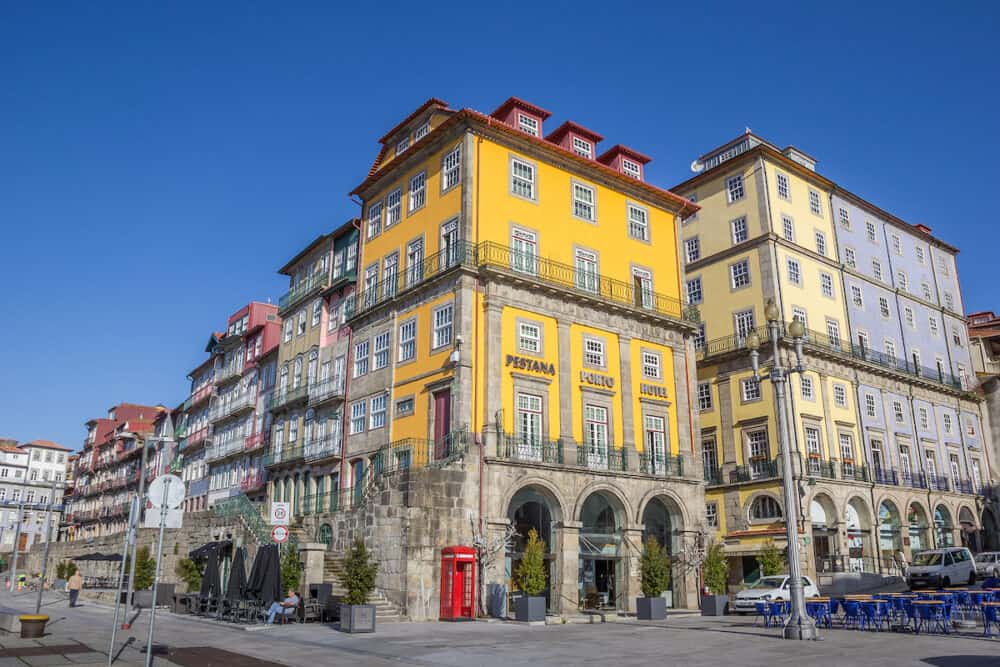
Best Time to Visit Porto for 2 days
Spring (March to May) is a great time to visit Porto as the weather starts to warm up, and the city is adorned with blooming flowers. The temperatures are pleasant, ranging from around 15°C to 20°C (59°F to 68°F). It is a relatively quiet season for tourism.
Summer (June to August) is the peak tourist season in Porto. Best to avoide this time if you hate crowds.
Autumn (September to November) is a pleasant time to visit Porto. The temperatures start to cool down, ranging from around 15°C to 20°C (59°F to 68°F).
The city experiences fewer tourists compared to summer, and you can still enjoy outdoor activities and explore Porto’s attractions comfortably. Since Porto is a coastal region, you’ll want to explore the beaches without being too cold.
Plan your trip
Save on fees abroad with the Wise Card—use it at ATMs, restaurants, and for flights or hotels in over 150 countries. Manage 40+ currencies in real-time with the Wise app.
Need Help Planning?
- Cheap Flights: Find the best deals.
- Accommodation: From hostels to luxury stays.
- Car Rental: Affordable options worldwide.
- Sightseeing Tours: Explore without breaking the bank.
- Travel Adapter: One adapter for all your needs.
- Travel Insurance: Don’t risk it—stay covered.
This post includes affiliate links. Read my full disclosure and content policy.
Overview of 2 days in Porto
Day 1 in Porto
- Porto Historic Centre
- São Bento Train Station
- Douro Wine Valley
- Douro River Cruise
Day 2 in Porto
- Santa Catarina Street
- Porto Cathedral
- Clérigos Tower
- Porto’s Beaches
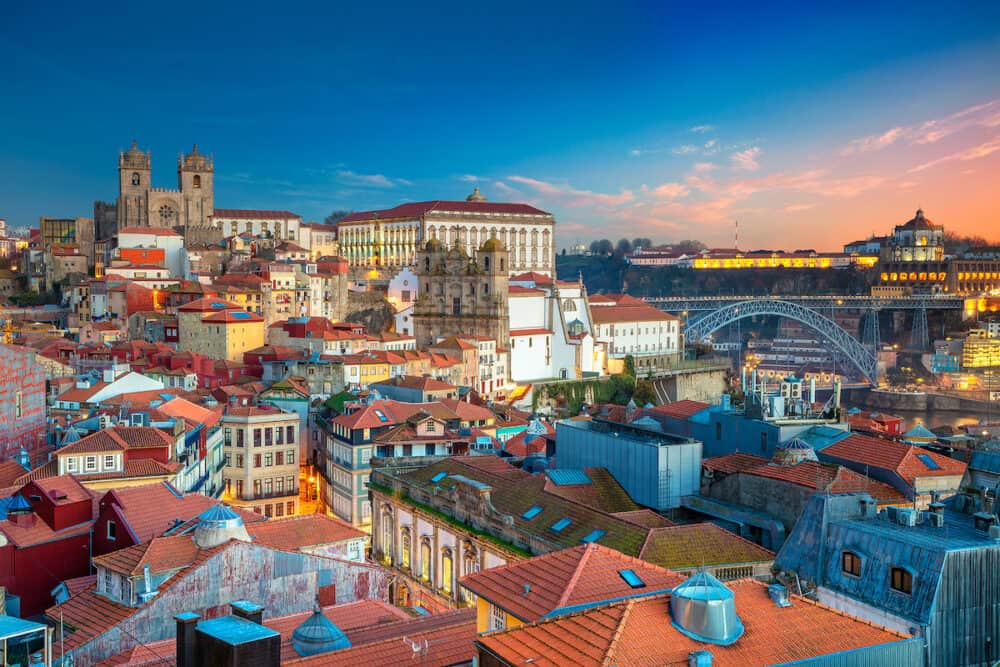
Day 1 in Porto
Porto Historic Centre
You’ll start off your tour of Porto by visiting Porto’s Historic Centre, also known as Oporto. It is a city located in Northwest Portugal and is renowned for its historic center.
Its historic center, known as the Ribeira district, is a designated UNESCO World Heritage site and is characterized by narrow, winding streets, colorful buildings, and traditional tiled facades.
The district is situated along the Douro River and is home to several notable landmarks, including the iconic Dom Luís I Bridge, which spans the river and connects Porto to the city of Vila Nova de Gaia.
This is what travel is all about, citing the least frequented places with fresh eyes and a new perspective. Everyone’s version and experience is different and unique.
So when you explore Ribeira, you’ll have an experience that cannot be replicated. The historic center of Porto showcases a blend of architectural styles, ranging from medieval to neoclassical.
It is dotted with numerous churches, such as the Porto Cathedral (Sé do Porto) and a Romanesque-style cathedral dating back to the 12th century. Another significant religious structure is the Church of São Francisco, known for its Baroque interior covered in gold leaf.
Drawing on the name of the city for inspiration, you’ll take a quick break and sip some traditional port with lunch.
Porto is also famous for its production of port wine, and the city’s wine cellars in Vila Nova de Gaia are a popular attraction. You can tour these cellars, learn about the history and production of port wine, and enjoy tastings.
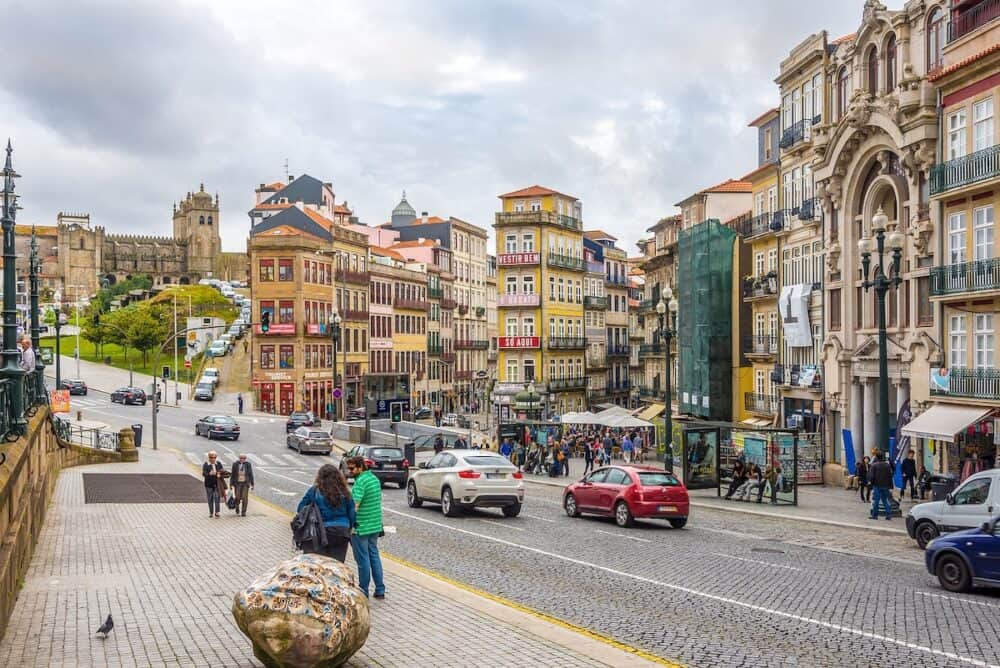
São Bento Train Station
Continue your exploration of the Ribeira district by visiting the São Bento Train Station. You may not think that a train station is worth visiting but this one rivals that of the Grand Central in New York.
The construction of São Bento Train Station began in the late 19th century and was completed in 1916. The station was designed by the Portuguese architect José Marques da Silva, who incorporated elements of French Beaux-Arts architecture into its design.
What sets São Bento Train Station apart is its magnificent interior covered with azulejo tiles. Azulejos are traditional Portuguese ceramic tiles that are intricately painted with decorative blue and white motifs.
The tile panels in São Bento depict historical and cultural scenes, including battles, religious events, and everyday life in Portugal.
The main atrium of the station is adorned with approximately 20,000 azulejo tiles (that’s a lot of miniatures!), creating a breathtaking sight for visitors.
The craftsmanship and attention to detail of the tile work make São Bento Train Station a unique and visually captivating destination.
It’s a great blend of Portuguese culture with architecture.
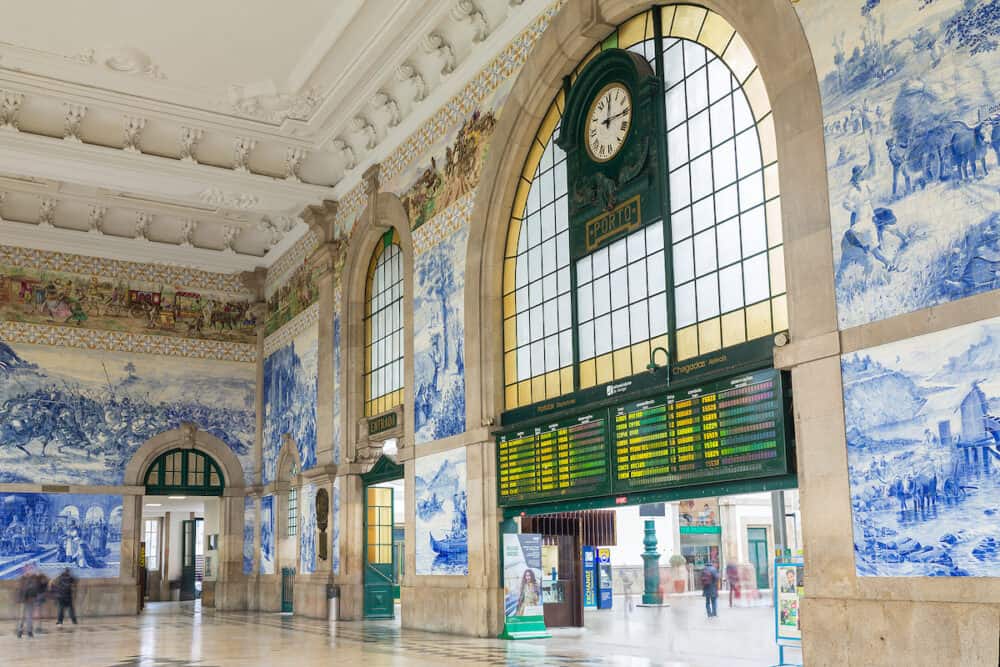
Douro Valley
As the afternoon develops, it gets closer to happy hour.
For happy hour, you’ll make your way to the Douro wine valley to sample native blends, and view the local craftsmanship of Portugal’s best wine in action.
The Douro Valley is a renowned wine region located in Northern Portugal. It is one of the oldest and most picturesque wine-producing areas in the world. The region is famous for its production of Port wine, a fortified wine that has been enjoyed for centuries.
The Douro Valley has steep, terraced vineyards that follow the curves of the Douro River. What could be better than sipping a deep red Port overlooking the grapes that made it?
You’ll learn how the unique microclimate, with hot summers and harsh winters, combined with the schist soil, creates ideal conditions for grape cultivation.
The region is primarily known for growing grape varieties such as Touriga Nacional, Touriga Franca, Tinta Roriz, and Tinta Barroca, among others. It’s a fascinating story to dive into (or gulp down).
Douro table wines can be red, white, or rosé, and they offer a different experience from the fortified Port wines. Don’t forget to purchase a bottle to take home for your next dinner party.
Exploring the Douro Valley wine region is a popular activity for wine enthusiasts and tourists. Many vineyards and wineries in the area offer wine tastings, tours, and even accommodations. Imagine staying in a vintage cellar…
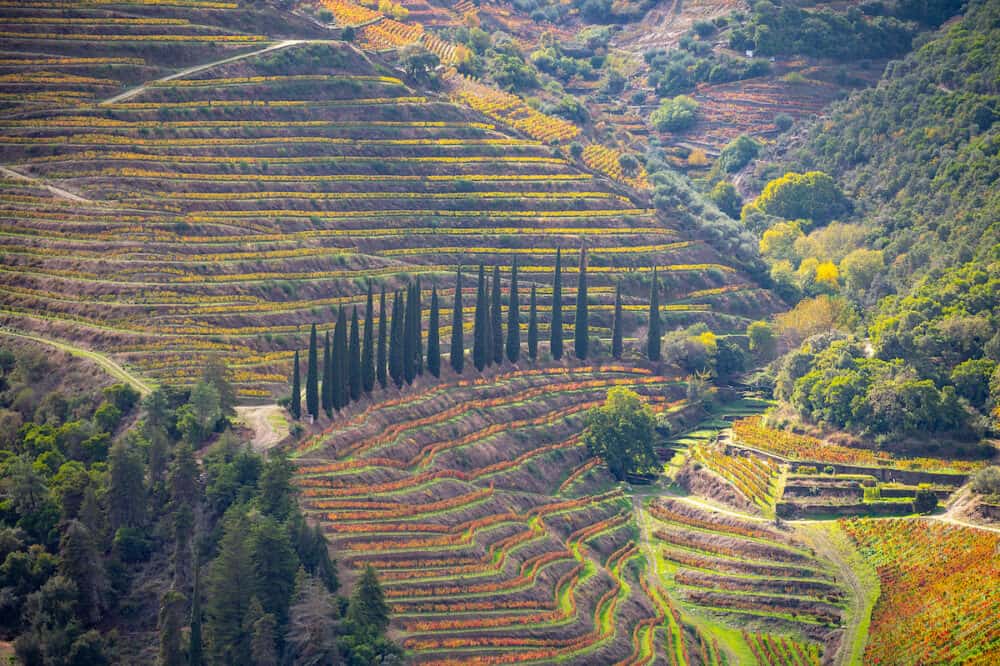
Douro River Cruise
They say “when in France”… but in this case, when in “Douro Valley” you have to end your day with a sunset cruise along the Douro river.
The river cruise is a compilation of Porto’s best features. It floats past landmarks, delivers traditional Portuguese dishes, keeps the wine and port flowing and gives you time to relax while exploring. It’s the perfect way to end your first day in Porto.
Douro River cruises typically start in Porto, where the Douro River meets the Atlantic Ocean. From there, the cruise travels Eastward into the heart of the Douro Valley, passing through the terraced vineyards, rolling hills, and picturesque towns which you would’ve seen today, but from a completely different perspective.
As you cruise along the river, you’ll have the opportunity to recall what you explored today from the comfort of your ship’s deck.
If you opt for a day cruise, they usually include stops at local vineyards, where you can learn about the winemaking process, stroll through the vineyards, and enjoy wine tastings of the region’s famous Port wines and table wines.
You’ll pass through towns such as Regua, Pinhão, and Peso da Régua, where you can discover local traditions, visit historic sites, and immerse yourself in the local culture.
The Douro River features a series of locks and dams that were constructed to facilitate navigation. Passing through these locks is an interesting experience as you witness the ships being raised or lowered to reach different river levels.
Travel in style and even remain on the boats for your first night of accommodation. The Douro River cruise ships are equipped with comfortable cabins, restaurants, lounges, and sometimes even swimming pools and spas. You can relax and enjoy the amenities while drinking in the atmosphere (literally).
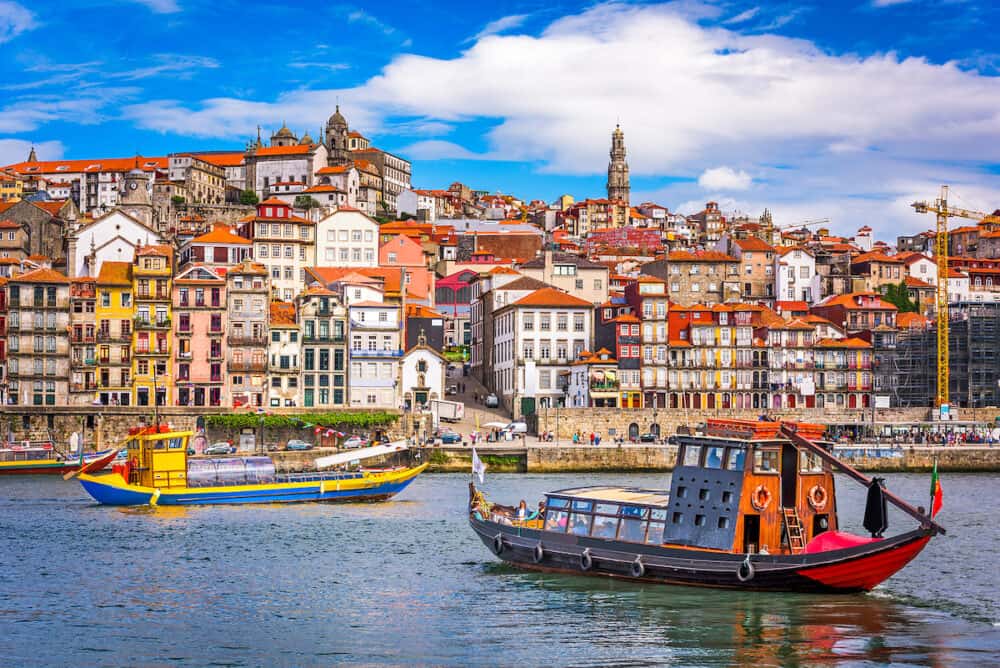
Day 2 in Porto
If you chose to stay on the boat, you’ll wake up to the slow sound of the boat slicing through the water and will be greeted by the smells of Portuguese spices and a continental breakfast to get you going before today’s activities.
If you opted for a hotel, you’ll have a similar experience. Either way, get up, get fed and get ready for the Porto whirlwind.
Santa Catarina Street
Santa Catarina Street (Rua de Santa Catarina) is a famous shopping street in the city of Porto, Portugal. The street stretches from Praça Marquês de Pombal to the iconic Praça da Batalha.
Santa Catarina Street is known for its electric atmosphere, vintage buildings, and an array of shops, boutiques, cafés, and restaurants. It is a popular destination for both locals and tourists looking to explore and indulge in some retail therapy.
One of the standout features of Santa Catarina Street is the Majestic Café. This historic café, with its elegant Art Nouveau façade, is, well, majestic. It has been a gathering place for intellectuals, artists, and locals since its opening in 1921. Embrace your inner Newton while you sip a coffee.
As you stroll along Santa Catarina Street, you’ll encounter a mix of local shops and international brands. From fashion boutiques and shoe stores to jewelry shops and department stores, there is something to cater to every taste and budget.
You’ll also find popular Portuguese favorites such as the renowned pastry shop Confeitaria do Bolhão, where you can try delicious local pastries.
At the end of Santa Catarina Street, you’ll reach Praça da Batalha, a bustling square filled with notable landmarks such as the São João National Theatre and the Church of Santo Ildefonso.
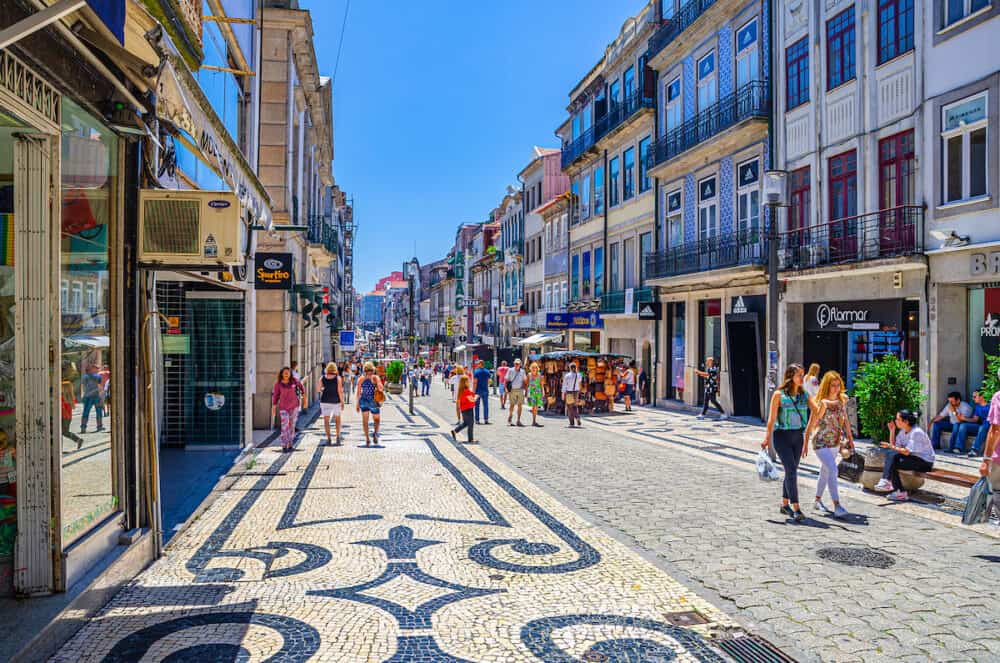
Porto Cathedral
Reckon it’s time for a little peace and quiet after the streets of Santa Catalina? Slow down for a second at the Porto cathedral.
The Porto Cathedral, also known as Sé do Porto or the Cathedral of Saint Mary, is a significant religious and architectural landmark located in the historic center of Porto, Portugal.
The cathedral combines Romanesque, Gothic and Baroque architectural elements. It stands proudly on a hill overlooking the city and the Douro River, offering views of lower Porto.
The interior of the Porto Cathedral houses a nave and aisles with vaulted ceilings, chapels, and a high altar. The altarpiece is a notable Baroque masterpiece created by the Portuguese sculptor Manuel Pereira.
The cathedral also holds a significant collection of religious art and artifacts, all of which are open to the public.
The area surrounding the cathedral, known as Terreiro da Sé, is a charming place to appreciate the cathedral’s architecture and enjoy views of Porto’s rooftops and the river.
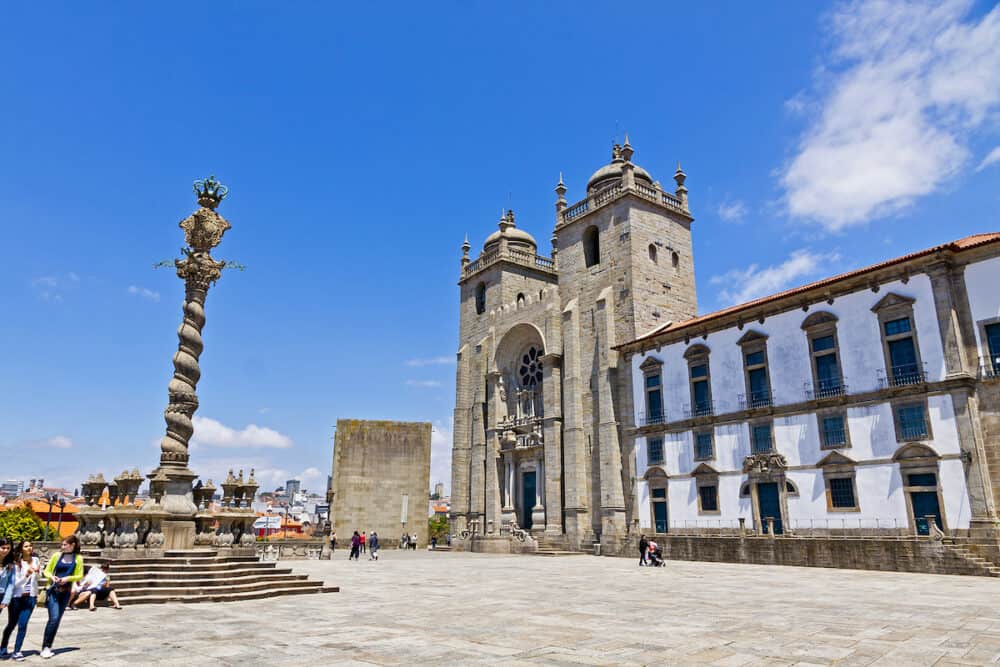
Clérigos Tower
In continuation of your laid-back journey, next up is the Clergios tower.
The Clérigos Tower, or Torre dos Clérigos in Portuguese, is located near the Porto Cathedral in the central neighborhood of Cedofeita. It was designed by the Italian architect Nicolau Nasoni and was completed in 1763.
Standing at a height of 75 meters (246 feet), it was the tallest structure in Portugal at the time of its construction. Imagine how proud that guy felt then…
The tower is made of granite and features a bell tower with six floors. Each floor has a different architectural style, ranging from Doric and Ionic to Corinthian and Composite orders.
The set of bells were traditionally used to regulate the daily life of the city. Today, the bells still ring out, adding to the atmospheric charm of the area.
If walking thousands of steps today still wasn’t enough for you, this definitely will be… The tower is accessible via a narrow, spiral staircase that consists of 240 steps. As you ascend the staircase, you’ll pass by small windows that offer glimpses of the cityscape below.
Adjacent to the Clérigos Tower is the Clérigos Church (Igreja dos Clérigos). This magnificent church, also designed by Nicolau Nasoni, is known for its ornate Baroque interior and beautiful altarpiece.
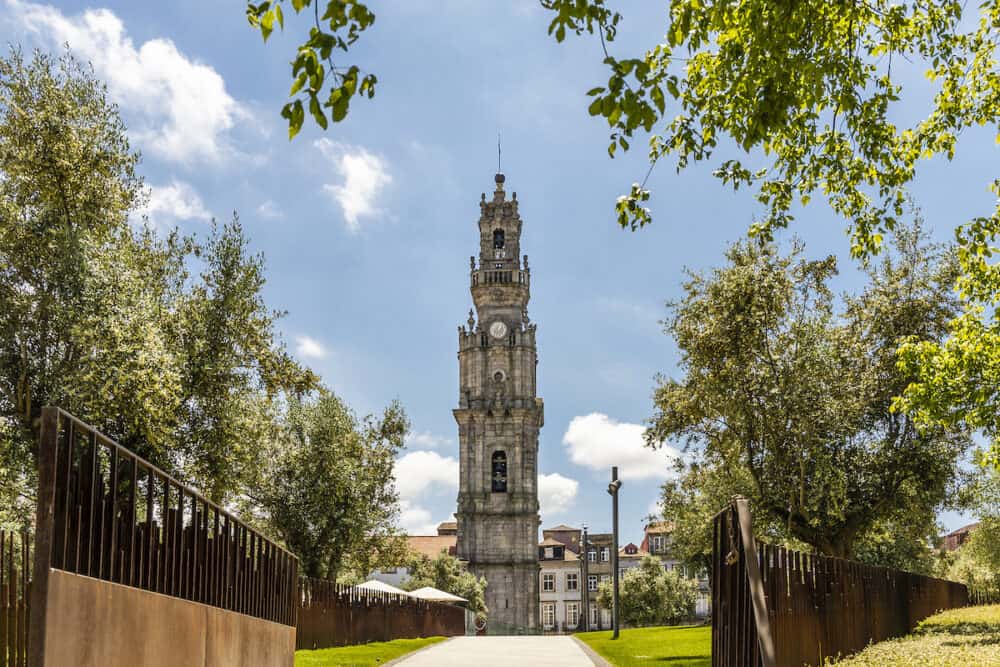
Porto’s Beaches
After all that walking, your legs may be a lil tired. Depending on the time you visit Porto, you may also be hot and sticky.
Cool off, relax and enjoy the last few moments of Porto by one of the many wonderful beaches along the Atlantic coast.
Matosinhos is a neighboring town of Porto and is well-known for its beautiful, pearly beaches. The beach is easily accessible from Porto by public transportation, and there are also beach side cafes and restaurants where you can enjoy a meal or a drink.
Nazaré, Portugal, is known for its monster waves. But if you’re not into Chasing Mavericks, then Matosinhos will be a calmer alternative to have a chilled surf or body boarding session.
Not a fan of the salty water and sand? Take a beachfront walk instead. Porto has a beautiful promenade that stretches along the coastline, offering scenic views of the sea.
Start at Foz do Douro and head towards Matosinhos. The promenade is lined with cafes, restaurants, and bars, where you can take breaks and enjoy the seaside.
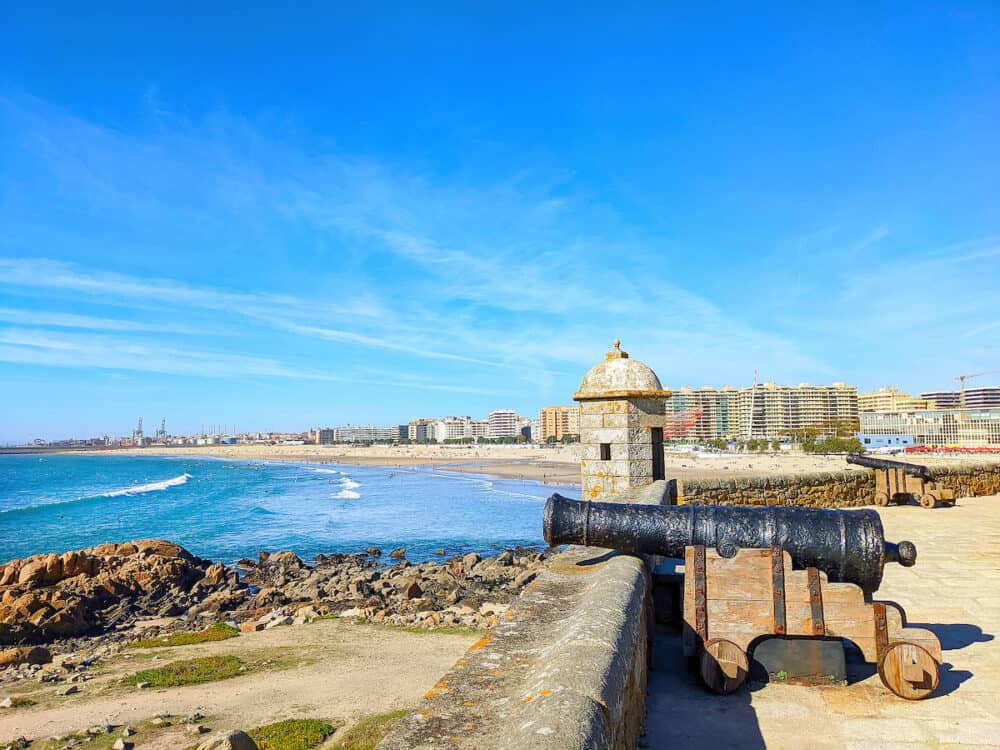
While Lisbon is the most frequently visited part of Portugal, Porto is a part of the country that is an alternative which showcases the best of Portugal’s local wineries and city life in a more laid back, country-inspired fashion.
It’s a place that you can relax while being close enough to major attractions that are native to Portugal’s past, present and future. Porto is Europe’s idyllic, magical porthole to Portugal’s greatest attractions.
Recommended tours in Porto
- Douro Valley Small-Group Tour with Wine Tasting, Lunch and Optional Cruise
- Craft Beer & Food Tour in Porto
- 3-Hour of Porto Highlights on a Electric Bike – Guided Tour
- Porto: 3-Hour Food and Wine Tasting Tour – Guided Experience
- Port Wine Lodges Tour Including 7 Wine Tastings (English)
- Private Electric Tuk Tuk Sightseeing Tour of Historic Porto
- Waterfalls, lagoons & old village in Gerês Park with Lunch Included
- The Best of Porto: 3-Hour Guided Walking Tour
- Highlights and Hidden Gems of Porto Private City Walking Tour
- Porto: Private Guided Walking Tour
- The 10 Tastings of Porto With Locals: Private Food Tour
If you’d like to save it for later, please save it to Pinterest.
